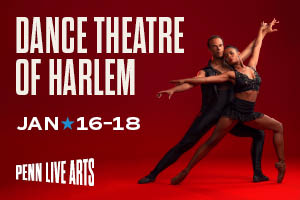Response to Lynn Brooks’ Review
I am delighted to read Dr Brooks’ astute perspective of Shibani Patnaik’s memorable Odissi performance at the Performance Garage this past Sunday. I am doubly happy that she reviewed this non-mainstream dance event for the “thINking DANCE” forum. I had received a desperate email from Shibani a few months back saying that she is having real difficulty in finding sponsors in Philadelphia, where she lives, while it was relatively easy for her to do the same in New York and Washington D.C. I was not surprised and told her it stems from insularity and provincialism. These comments were not arbitrary and I did not pass this judgment casually.
This email exchange with Shibani and some questions raised by Dr Brooks prompts me to write this response. Dr. Brooks writes: “I knew little of Odissi dance of India….nor had I ever heard of Ms Patnaik, who has been living in Philadelphia for the past four years. Watching Patnaik’s finely wrought performance, I wondered why I had never heard of her and pondered the circles of dance–of art–that I inhabit”. Her self-reflexive questioning about her lack of awareness is critical for any dialogue to take shape, not just for dance. It is unfortunately not an aspect of much of the dance culture in Philadelphia. I say this both from my personal experience as an anthropologist and dance maker living here for the past several years and by talking to fellow dancers and choreographers who are first and second generation immigrants who call Philadelphia their home. I am not writing this because I personally feel marginalized. I am lucky enough to belong to a renowned college and the American dance academy, both of which are part of the international world of culture and dance. I am humbled everyday by my access and opportunities. I am writing this for my fellow dancers such as Shibani, and other well trained dance practitioners of Indian dance living in Philadelphia. I am writing for these talented and devoted dancers living in Philadelphia who are left out of sustainable funding, reviews, presenters and curators in an insular local system that seems to exist only for the benefit of insiders.
The dance historian Sally Banes once wrote that dance reviewers should be like ethnographers going into a concert, as an outsider looking into an unknown cultural context. The challenge for the ethnographer is to write in a way that can share authority with the people they are writing about and not make hasty judgments. In the cosmopolitan worlds we live in today one does not need to travel to another part of the world to experience cultural difference. We just have to be curious, open, and willing to share authority. Dr. Brooks mentions that initially she felt like an outsider during Shibani’s concert but slowly felt integrated with the audience. It needs more than one concert, but this is how dialogue begins.
India has eight official classical dances, innumerable folk and tribal dances (all of these are contested categories), as well as many eclectic contemporary and popular forms, including Bollywood. Indian dance is a rich area of cultural and political debate and many of the dance forms have roots predating the European Renaissance. The vibrancy and paradoxes of this largest democracy in the world are reflected in the dialogue and exchanges that take place between the various dance communities that now inhabit the globe. These communities are as diverse as the countries in Europe. If the dance world of Philadelphia can embrace
internationalism and pluralism within their own cultural contexts then perhaps a path from provincial to international can begin. It is time to seek out more exchange and dialogue with the diversity that exists within Philadelphia’s dance culture and enrich the city’s cultural fabric.
Pallabi Chakravorty, Ph.D
Associate Professor
Music and Dance
Swarthmore College




